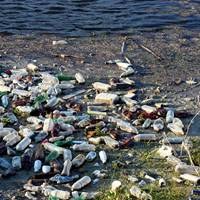(BRUSSELS) – EU ministers gave final approval Tuesday to new laws to tackle marine litter coming from single-use plastic products found on European beaches, as well as abandoned fishing gear and oxo-degradable plastics.
The formal adoption of the new rules by the Council today is the final step in the procedure.
The single-use plastics directive builds on the EU’s existing waste legislation but goes further by setting stricter rules for those types of products and packaging which are among the top ten most frequently found items polluting European beaches. The new rules ban the use of certain throwaway plastic products for which alternatives exist. In addition, specific measures are introduced to reduce the use of the most frequently littered plastic products.
Single-use plastic products are made wholly or partly of plastic and are typically intended to be used just once or for a short period of time before they are thrown away.
The final adoption was welcomed by the European Commission. “Plastic straws or forks are little objects but can make great, long-lasting damages,” said the Commissioner for environment, maritime affairs and fisheries Karmenu Vella: “The single-use plastics legislation will address 70 percent of marine litters items, avoiding environmental damage that would otherwise cost 22 billion by 2030.”
One of the main purposes of this directive is to reduce the amount of plastic waste which we create. The new rules will introduce:
- A ban on selected single-use products made of plastic for which alternatives exist on the market: cotton bud sticks, cutlery, plates, straws, stirrers, sticks for balloons, as well as cups, food and beverage containers made of expanded polystyrene and on all products made of oxo-degradable plastic.
- Measures to reduce consumption of food containers and beverage cups made of plastic and specific marking and labelling of certain products.
- Extended Producer Responsibility schemes covering the cost to clean-up litter, applied to products such as tobacco filters and fishing gear.
- A 90% separate collection target for plastic bottles by 2029 (77% by 2025) and the introduction of design requirements to connect caps to bottles, as well as target to incorporate 25% of recycled plastic in PET bottles as from 2025 and 30% in all plastic bottles as from 2030. Member states have agreed to achieve a 90% collection target for plastic bottles by 2029, and plastic bottles will have to contain at least 25% of recycled content by 2025 and 30% by 2030.
The Council decision will now be followed by the publication of the texts in the Official Journal of the European Union. The Directive will enter into force 20 days after the publication. The Member States will then have two years to transpose the legislation into their national law.
Annex: Single-Use Plastics Directive (summary and main outcomes)



